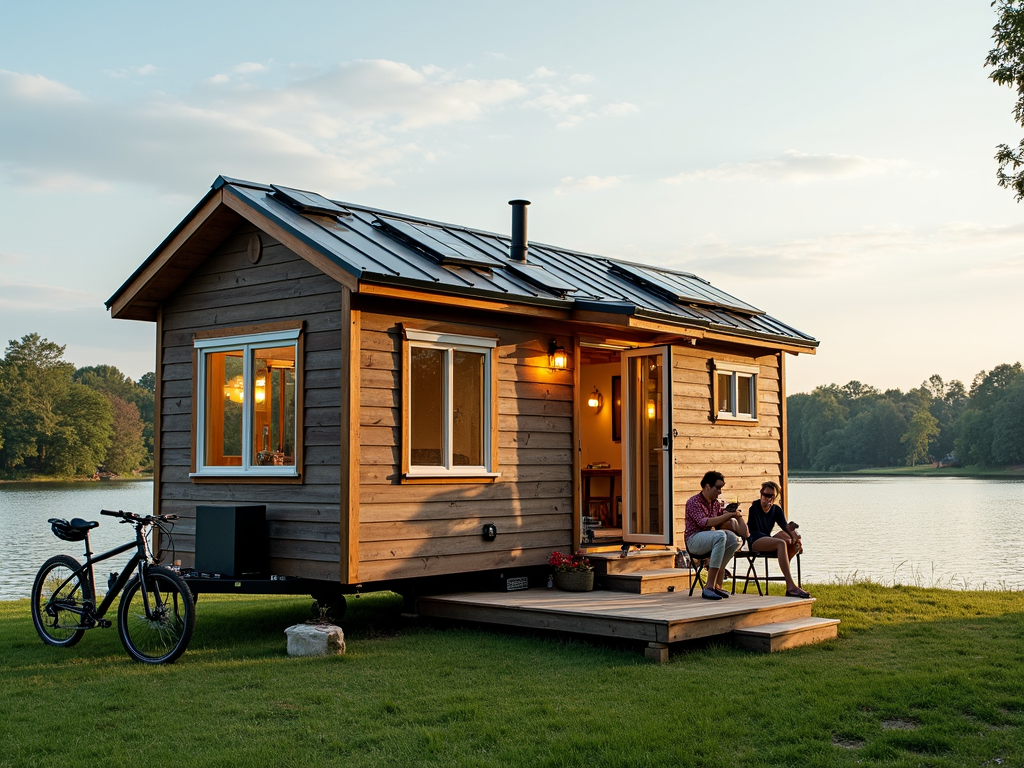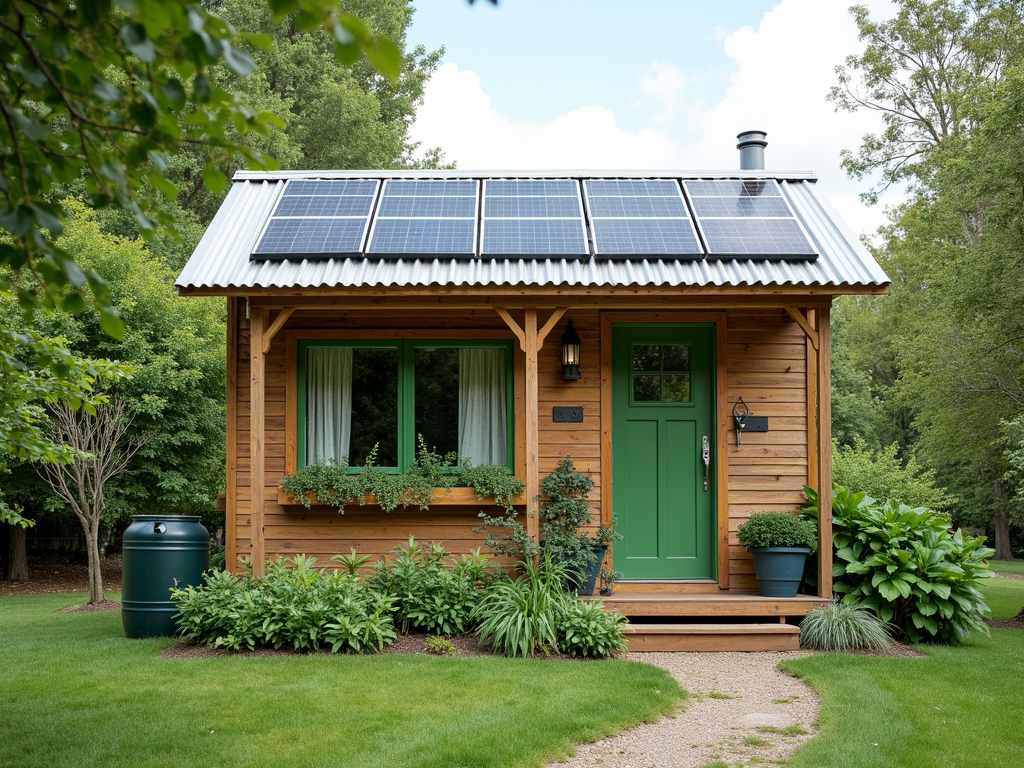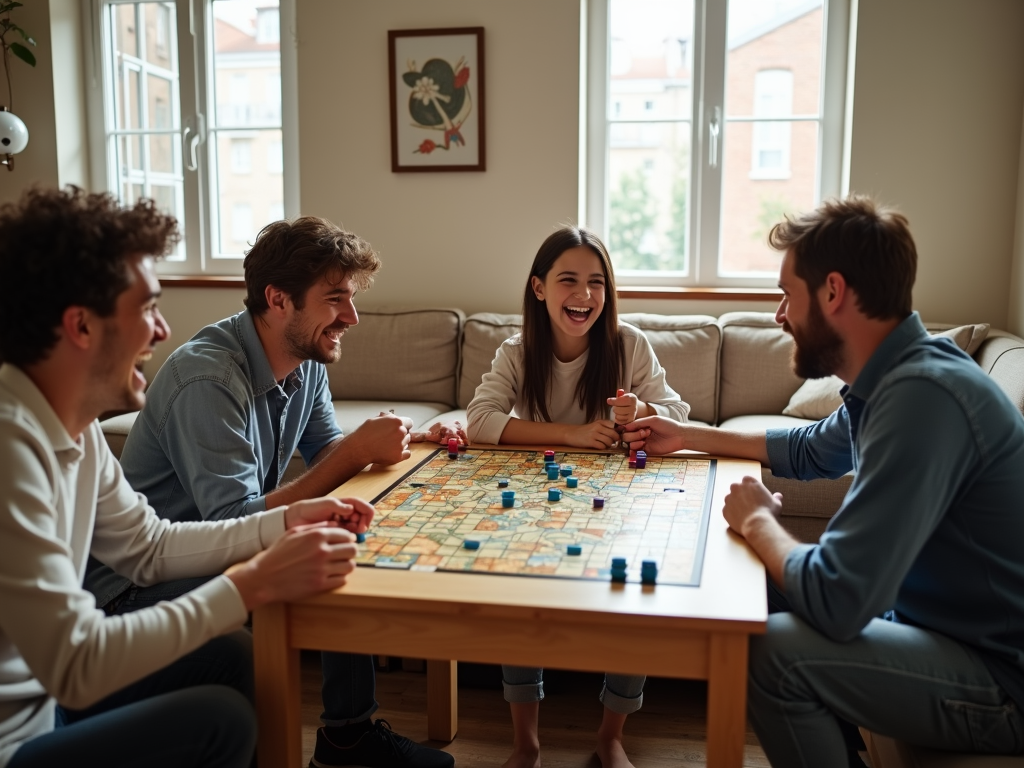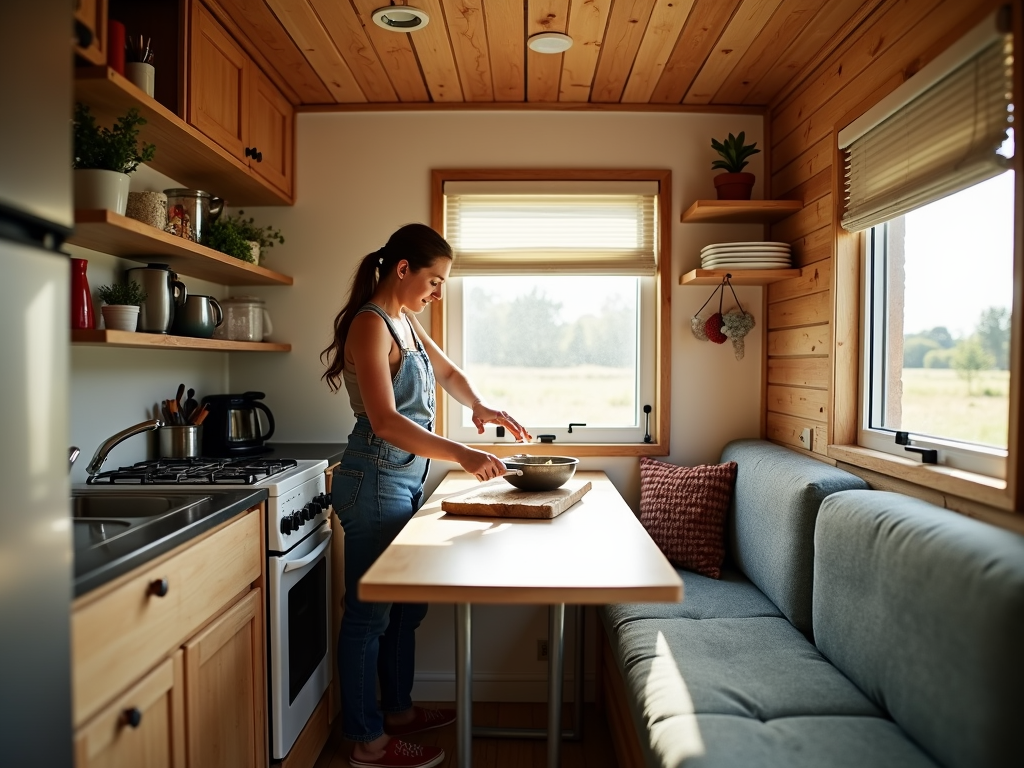Overview
More people are choosing to downsize, trading big homes for tiny homes or small apartments. This isn’t just about less space—it’s about living better with less. Downsizing offers financial freedom, a smaller environmental footprint, and a simpler, more meaningful life.
Financial Benefits
Downsizing can lighten your wallet’s load. A tiny home costs $30,000 to $60,000 on average, while traditional homes often top $300,000. Small apartments also mean lower rent or mortgage payments. You’ll save big on utilities too—less space needs less power.
Furniture and upkeep costs drop since you’re filling and fixing less. I downsized from a three-bedroom house to a one-bedroom apartment. My rent fell by half, and my electric bill shrank. That extra cash let me travel more and stress less about bills.
Here’s a quick look at the savings:
| Expense | Traditional Home | Tiny Home |
|---|---|---|
| Purchase Price | $300,000 | $50,000 |
| Monthly Utilities | $200 | $50 |
| Maintenance | $100/month | $20/month |
These savings can help you pay off debt or build a nest egg.

More Financial Wins
With lower costs, you might pay off a tiny home fast—or skip a mortgage entirely. That’s a huge relief. Plus, the money you save can fund dreams like starting a business or taking a gap year. I used my savings to take a pottery class, something I’d always wanted to try.
Some folks even keep their big home and rent it out after downsizing. That extra income can grow your savings or cover fun extras.
Environmental Benefits
Downsizing helps the planet too. Smaller spaces use less energy—think lower heating and cooling needs. Tiny homes with green technology, like solar panels or composting toilets, take it further. A solar-powered tiny home can run on sunshine, cutting fossil fuel use.
Buildings make up nearly 40% of global energy use. By living smaller, you shrink that impact. Less construction means fewer trees cut or metals mined. I met someone with a tiny home built from reclaimed wood—it looked amazing and saved resources.

Green Living Made Simple
Smaller spaces push you to buy less stuff. That means less waste and fewer delivery trucks burning fuel. Many tiny homes use efficient appliances too, like mini fridges or LED lights. Some owners go off-grid, relying on wind or solar. It’s a practical way to live lighter on the earth.
Lifestyle Benefits
Downsizing frees up your life. Less stuff means less cleaning and clutter. I used to spend weekends tidying my big house—now, I’m done in an hour. That leaves time for hiking, reading, or just chilling with friends.
Small spaces bring people closer. In a tiny home or small apartment, you share tight quarters with family. It’s cozy, not cramped, if you set it up right. Studies say clutter stresses us out—downsizing cuts that noise and calms your mind.

Freedom and Flexibility
Tiny homes on wheels let you move anywhere—imagine waking up by a beach one week, a forest the next. Even small apartments in cities put you near parks, cafes, and events. After downsizing, I found myself outside more, meeting neighbors and exploring. It’s less about walls and more about what’s beyond them.
Challenges and Solutions
Downsizing has hurdles. Storage is tight—you can’t keep everything. I had to ditch half my clothes, but a capsule wardrobe (10-15 mix-and-match pieces) works wonders. Multi-use furniture helps too—a bed with drawers or a fold-away table saves space.
Privacy can feel tricky in tiny homes. Curtains or screens create personal zones. I used a bookshelf as a divider in my apartment, and it worked perfectly. Communication matters too—set rules with roommates or family.

Overcoming Obstacles
Zoning laws can complicate tiny home living. Check your area’s rules—some places ban small builds or require utility hookups. Tiny home communities are popping up, though, making it easier. Storage tip: go vertical with tall shelves or hooks. I keep my bike on the wall—it’s out of the way and looks cool.
Here are my top 5 tips for small-space living:
- Declutter Often - Keep what you use and love.
- Go Vertical - Shelves and hooks free up floor space.
- Pick Smart Furniture - Think sofa beds or ottomans with storage.
- Simplify - Focus on experiences, not things.
- Stay Organized - Use bins and labels to stay tidy.

Why It’s Worth It
The challenges are real, but the payoff is bigger. Downsizing forces you to rethink what matters. I worried I’d feel trapped, but instead, I felt free. Less stuff, less stress, more life. With planning, small spaces become big opportunities.
Summary
Downsizing to tiny homes or small apartments cuts costs, shrinks your environmental impact, and simplifies your days. It’s not always easy—storage and privacy take work—but the rewards outweigh the effort. You’ll live larger by focusing on what counts.